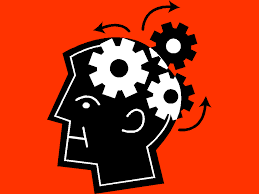In this stressful culture we often reach a place of overwhelm and need to restore. Many people turn to things like video games and Netflix to relax, yet it doesn’t seem to be working. So why aren’t we getting refreshed and restored? Reported levels of depression, anxiety and stress are higher than ever.  According to the American Psychology Association’s annual “Stress in America” poll (2017) results showed individuals were more likely to report symptoms of stress including anxiety, anger and fatigue than in previous years. Statistics in Canada are similar as we are seeing more inquiries for depression and anxiety treatment. One would think that with all the apps, games, websites and resources available to us, we would be doing better in dealing with these stressors. What if all this increased technology, accessibility and social media is part of the problem?
According to the American Psychology Association’s annual “Stress in America” poll (2017) results showed individuals were more likely to report symptoms of stress including anxiety, anger and fatigue than in previous years. Statistics in Canada are similar as we are seeing more inquiries for depression and anxiety treatment. One would think that with all the apps, games, websites and resources available to us, we would be doing better in dealing with these stressors. What if all this increased technology, accessibility and social media is part of the problem?
Let’s look at a few changes to make in order to effectively refresh and bring restoration:
- Practice Downtime. How do you use your free time? Many people actually put themselves into a position of detachment rather than practicing restorative downtime.
 This involves mindless web surfing, playing online games or video games, flipping through Instagram or Pinterest, etc. Although these things may be a source of enjoyment, make sure you are engaged in the process rather than zoned out. A prerequisite for recharging is to do a brief check-in to validate how you are feeling. How has your day been? What was hard or bad? What was good? Affirm those feelings without judgment. Then determine what would be helpful for downtime. Detachment is checking-out. It is like shutting your phone off when you have a low battery. Downtime is recognizing the low battery and recharging by plugging in. This will look different for everyone. Your emotions will give you a clue about what you most need.
This involves mindless web surfing, playing online games or video games, flipping through Instagram or Pinterest, etc. Although these things may be a source of enjoyment, make sure you are engaged in the process rather than zoned out. A prerequisite for recharging is to do a brief check-in to validate how you are feeling. How has your day been? What was hard or bad? What was good? Affirm those feelings without judgment. Then determine what would be helpful for downtime. Detachment is checking-out. It is like shutting your phone off when you have a low battery. Downtime is recognizing the low battery and recharging by plugging in. This will look different for everyone. Your emotions will give you a clue about what you most need. - Give Permission. Sometimes we need someone to give us permission to recharge. We might feel like it’s not okay to take a break or that we ‘always need to be productive.’ The problem here is that doing detachment behaviours like over use of video games or Netflix, porn, drugs, mindless eating or checking out with alcohol provides us with something to do but it is not restorative! If the only time we allow ourselves to
 ‘take a break’ is when we are using a detachment behaviour, we will not give it up or stop doing that behaviour, no matter how destructive it is. The valid need underneath it — taking a break — IS a valid need and therefore needs to be met. That doesn’t mean we need to use the substance or process to detach/cope, it means we need to start meeting our valid needs effectively. Give yourself permission to do this work for your own sake and those around you.
‘take a break’ is when we are using a detachment behaviour, we will not give it up or stop doing that behaviour, no matter how destructive it is. The valid need underneath it — taking a break — IS a valid need and therefore needs to be met. That doesn’t mean we need to use the substance or process to detach/cope, it means we need to start meeting our valid needs effectively. Give yourself permission to do this work for your own sake and those around you. - Change the Channel. What are you thinking about? What are you listening to in your head? If your thoughts are negative, stressful, harsh or critical, they are not helpful. Catch your thinking and challenge it. Switch to a different channel. Acknowledge the negative thoughts and choose to think about something beneficial. Some aids to do this are to determine that if you do need to worry about something, do it at a set time.
 Use the worry to develop a plan about how to deal with the concern. A short walk, relaxation breathing, listening to music, having a dance party, or doing some stretching can help reset the mind. If your thoughts are looping and you are having trouble concentrating, you may need to learn some skills on how to rewire the brain. (Catherine Pittman has a great book called “Rewiring the Anxious Brain” and you can use the link through our Resource Page on the website). Studies over the past several decades have confirmed the plasticity of the brain and our ability to ‘rewire the circuits’ and lay down new tracks — just like a tamped down path through the forest. We can carve out a new pathway by intentionally changing the channel and doing what CBT therapists call ‘thought stopping and replacement.’
Use the worry to develop a plan about how to deal with the concern. A short walk, relaxation breathing, listening to music, having a dance party, or doing some stretching can help reset the mind. If your thoughts are looping and you are having trouble concentrating, you may need to learn some skills on how to rewire the brain. (Catherine Pittman has a great book called “Rewiring the Anxious Brain” and you can use the link through our Resource Page on the website). Studies over the past several decades have confirmed the plasticity of the brain and our ability to ‘rewire the circuits’ and lay down new tracks — just like a tamped down path through the forest. We can carve out a new pathway by intentionally changing the channel and doing what CBT therapists call ‘thought stopping and replacement.’
If you are thinking ‘nice thought but I don’t have time to work on this stuff’ then you are probably doing a lot of detachment behaviours already. It is amazing how time consuming and unproductive they are! Playing on a cellphone is something you can actually track and challenge yourself with — check your daily time usage. You might report that you are just doing these things to relax but if you are living at levels of chronic overwhelm it’s not effective. If your relaxing behaviour is not recharging you and making you feel some degree of refreshment, it’s likely detachment. This can also be assessed by paying attention to your levels of fatigue and lack of energy. If you aren’t sure what to do that would be recharging, you’re in luck! This is something you can explore and experiment with. If you have some things you used to do that you enjoyed, try them again. If you have some ideas that you’ve not allowed yourself to do because of any amount of excuses give it a try. Take a course, read a book, go for a hike, do something different than usual. [Prefaced by that emotional check-in I mentioned in point number one]. Checking in with the emotions allows the behaviours to be recharging and restorative because the emotions have not been shutdown or stuffed. This is a work in process. Be kind to yourself and give yourself permission to start meeting your valid needs.
